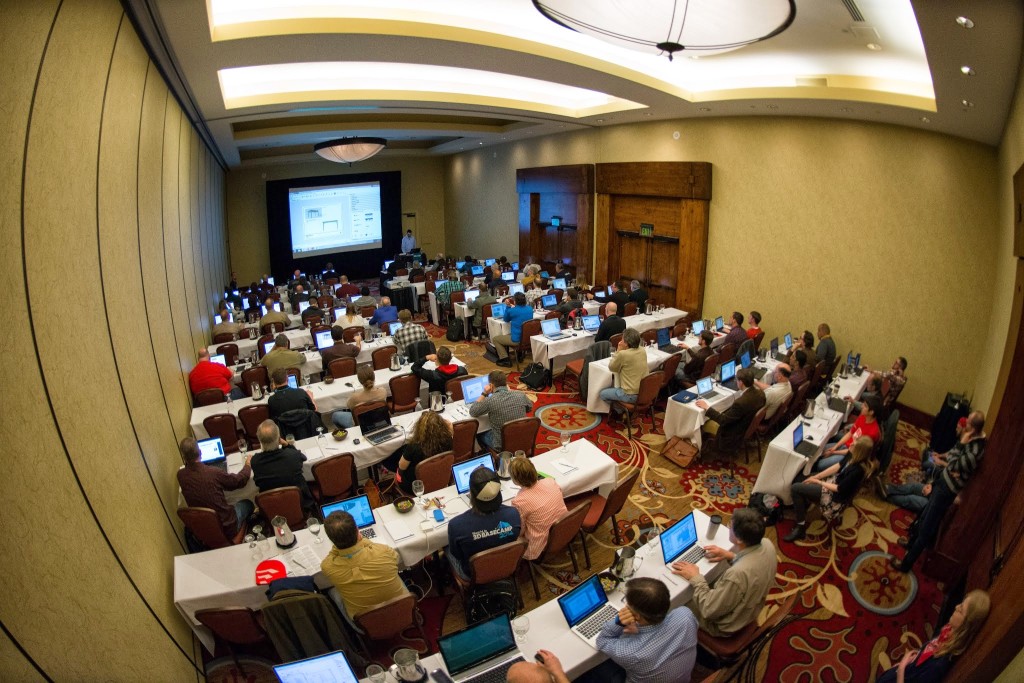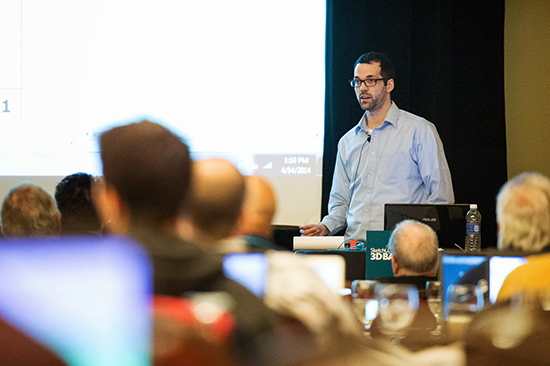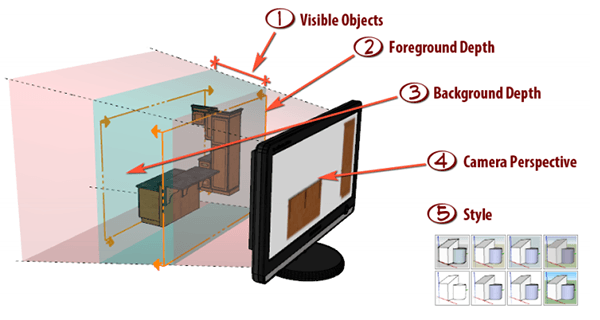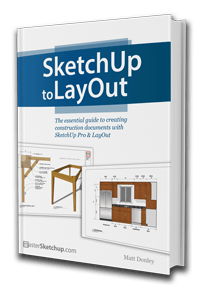Master Sketchup with Matt Donley

When I was starting DesignerHacks.com I gained a heightened sense of what was going on in and around the sketchup community. I really wanted to know who was who in the sketchup space, and it seemed like every time I typed something related to sketchup into my search enginer, Matt Donley came up. I’ve fallen in love with his story and blog, so I wanted to get him to share it with the design nation.
Designer Insider with Matt Donley
Tell us your story and why you decided to start MasterSketchup.com
I discovered SketchUp in 2007 and immediately fell in love with it. I have a background in construction so I began using it to model different projects I was working on. Like most people, I was struck by how simple it was to learn, so I basically started modeling without any formal training. But I realized that I was picking up some bad habits, and needed a little guidance to get me back on track. That’s when I realized there really wasn’t a good resource online for learning SketchUp. Fast forward a few years; I started MasterSketchUp.com as a hobby and to provide a resource to other people like me who were trying to learn SketchUp.
What one thing with your brand has really stuck? Where do sketchuppers seem to be finding the most value?
The one thing that is consistent across my brand is the quality and level of detail in my tutorials. I always use screen shots or videos, and I will try to break things down, step by step, so you can follow along even if you’re not familiar with SketchUp. I think that’s the thing people most appreciate.
You just had the opportunity to teach at Basecamp. What was that like? Would you do it again?
Teaching at Basecamp was incredible. It was an absolute honor to be asked to conduct a class there. Honestly, I was really nervous at first, but once I started, all that nervousness went away. I would do it again for sure. It can be challenging to teach to a large group of people where you have a wide variety of skill levels, but I kept each step clear and simple so everyone could follow along.
Your class at Basecamp focused on moving from Sketchup to Layout which is also the name of your new book. Why that topic?
Because the class I taught was only 3 hours, I decided to keep it more focused as an introduction to LayOut. In my book, SketchUp to LayOut, I go into much greater detail in addition to learning all the basics of LayOut. It’s really important that you know what you want your LayOut viewports to look like before you begin modeling in SketchUp. That way, you’ll know the level of detail required, and you’ll be able to organize your model in a way that gives you full control over the look of your viewports. I chose this topic because there simply isn’t a lot of information out there on the subject.
LayOut is awesome, but you need SketchUp Pro. What would you say to someone who wants to get SketchUp Pro and buy one of your Sketchup to Layout packages, but is hesitant because of the SketchUp Pro price tag?
You need to take a look at your existing workflow, and identify opportunities where you can save time or increase the quality of your design presentations. Compare the cost of SketchUp Pro with other professional design tools. Some people will only do conceptual work in SketchUp, then go to their traditional CAD program and draw the project again from scratch. Why not continue working in SketchUp, building from what you’ve started from? Even for simple 2D presentations (PDF, slideshow, or printing on paper), LayOut can’t be beat with its ability to remain dynamically linked to your SketchUp models to easily update your document with any changes made to the model. Or, create fully detailed drawings with LayOut’s superb annotation and dimension tools. My book can get you up and running with LayOut quickly, and teach you a number of advanced tricks for section cuts, hatching, and overlaying viewports.
I love Sketchup and I know you do too. I see tons of messages on twitter of things like ‘I hate Sketchup.’ I’ve made it a point to try to help people on there where I can. But why do you think that’s such a common theme?
The fact that SketchUp is such a simple tool to get started with makes people think that they don’t need any instruction at all to learn it. That’s exactly what I did when I first started. This leads to missing out on fundamental principles such as groups/components, which can cause major frustration to the new user when things start to “stick” to each other. This is just one example. Investing a little bit of time up front learning the essentials can save you from a lot of frustration down the road. I’ve had many people from the “I hate SketchUp” crowd discover my tutorials and tell me it finally “clicked” for them.
The Design Nation is always looking for ways to become more efficient. What three tools do you use (outside of Sketchup) to stay efficient?
- Trello.com – It’s a task management/collaboration tool. It’s very flexible in how you can use it, so it might not be immediately obvious as to how to use it effectively. I’ve been constantly changing my strategy and adapting. Check out some of their examples to see how other people use it, and see how you can apply those to your own Trello board.
- Join.me – This is the easiest, most straight-forward screen sharing tool I’ve ever used. I’ll have SketchUp open, start join.me, call up the architect and tell them to check their email, and they simply click a link and it opens a browser where they can see my screen in real time. I’ll show them my SketchUp model and we’ll work out a number of details that typically would have taken numerous emails and days of back and forth.
- Doodle.com – Don’t judge this tool by its name. Doodle is a great way to schedule meetings with multiple team members. Instead of sending a mass email to everyone asking if Thursday at 3pm works, you go to Doodle.com, and select a range of dates and times that are potential for the meeting. Attendees can then cross off times the definitely will NOT work for them. What you’re left with is a couple time slots that everybody is ok with, so you can then finalize the meeting time. It’s much simpler than it sounds, trust me.
Aside from your own, what’s one book readers could snag today to really level up their modeling skills?
If you’re an architect, you’ve got to check out Michael Brightman’s book, “The SketchUp Workflow for Architecture.” In it, you’ll find a condensed refresher on modeling in SketchUp, and a very powerful workflow for creating models for LayOut. It’s a step by step workflow that can be applied to new or existing construction, and there are a ton of valuable tips throughout the book. For instance, Mike’s method for using watermarks to apply a style is ingenious.
Final words of wisdom?
Always use groups and components :)
 If Matt has inspired you to start learning sketchup, check out the Designer Hacks growing sketchup tutorial library or Matt’s website MasterSketchup.com. If you’d like to get in contact with Matt the best way to do so is via social media at his Facebook page, Google Plus, Twitter, or LinkedIn.
If Matt has inspired you to start learning sketchup, check out the Designer Hacks growing sketchup tutorial library or Matt’s website MasterSketchup.com. If you’d like to get in contact with Matt the best way to do so is via social media at his Facebook page, Google Plus, Twitter, or LinkedIn.




No comments yet.